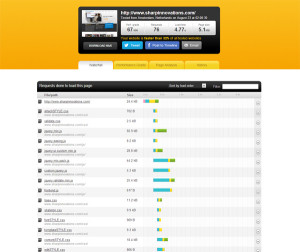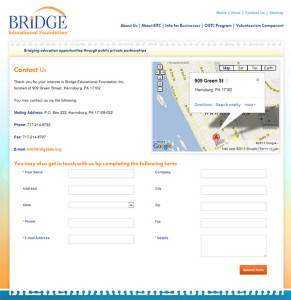There are a multitude of reasons people may leave your website, whether it be the speed, content availability, design usability, or lack of desired results. While all websites are different, there are a few constant factors to account for in order to please your users.
1: Slow Page Load

There are many ways to speed up your site, some being quick and easy, while others are more time consuming ventures. We can optimize images, compress transfer of files, minify CSS and JavaScript, and enable browser caching. These are a few of the core items that can be tweaked to enhance speed.
Two recommended tools for measuring page speeds are:
- PageSpeed Insights (http://developers.google.com/speed/pagespeed/insights/)
- Pingdom Website Speed Test (https://tools.pingdom.com/)
2: Annoying Elements
Advertisements, pop-ups and videos are just some of the nuisances that will push users away from your site instead of engaging them. Clicking the mute button or constantly canceling pop-up windows becomes overridingly annoying to most users. In a lot of cases, dealing with these annoying elements outweigh the value that your site actually brings in the first place, thus driving users away. Besides their annoyance, these items tend to be more resource-intensive and will tend to stymie page speed.
So do we strip out all video, pop-up subscriptions, or ads? No, these items are fine, but in moderation, and located where a user expects them, not forced errantly. Consider moving items to the side or bottom of a page. As for video and audio, allow the user to decide when and how the media is played.
3: Bad Usability and Design
One obvious deterrent is having a design that is unattractive. As a consumer, we would rather go to a website that we find pleasing to view and enjoyable to use. It is even better if the design is so appealing that the user will share it! Features like navigational layout, easily accessible links, or intuitive interactive animations can make or break a website. If done well, it will make the website visit enjoyable, but if not, it can drive users to away. In a practical sense, how can we expect a user to find what they are looking for when the navigation was thrown together over time, instead of thoughtfully and cohesively planned? This also applies to mobile usage, as users want a site that’s easy to use on all devices. See our article Smart Phones vs. the Personal Computer for more details about mobile usage.
4: Weak and Uninteresting Content
Paul Rand said “Design is the method of putting form and content together.” The key here is not that content is more important, or that design is more important, but that they should work in concert. With that said, it is easy to focus on the appearance of a website and in the same breadth neglect its content. Without cogent content, the design is just a useless decoration. With useless content, users again have no reason to stick around.
Content has two main things it needs to address, these are usefulness and understandably. If it isn’t useful to the user, they have no reason to go any further with it. However, if it’s great, but a user can’t understand it, they have no means to take advantage of the information available. Another concern is that of being current. If content is old or outdated, it is no longer relevant and thus falls into the category of being not useful.
P.S. Don’t forget to spell check all of your work before putting it live. Even review it two, three, or four times with different sets of eyes. Simple things like spelling errors can decrease user’s trust in you and, in turn, affect your credibility.
5: No Contact Page

In summation, there are simple and controllable steps to take to ensure that users don’t leave your site for nothing. To prospectively convert visitors into customers or create more loyal current customers, a website that is more enjoyable and useful should be a priority.
So you’ve held true to the advice here, and still can’t seem to generate a solid lead or hold viewers on your site? Request a free consultation from Sharp Innovations and let us assist you in generating growth from your online endeavors!
